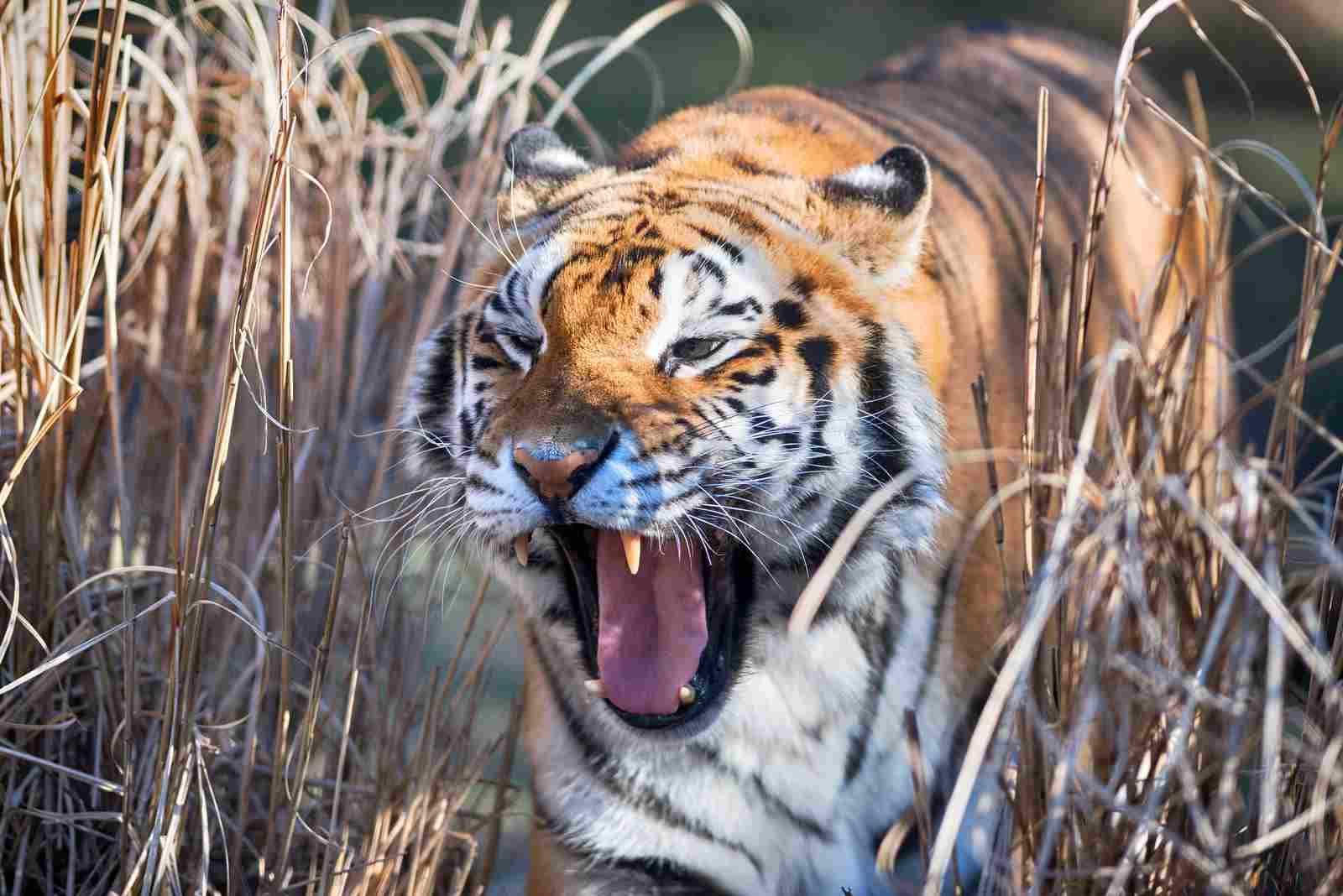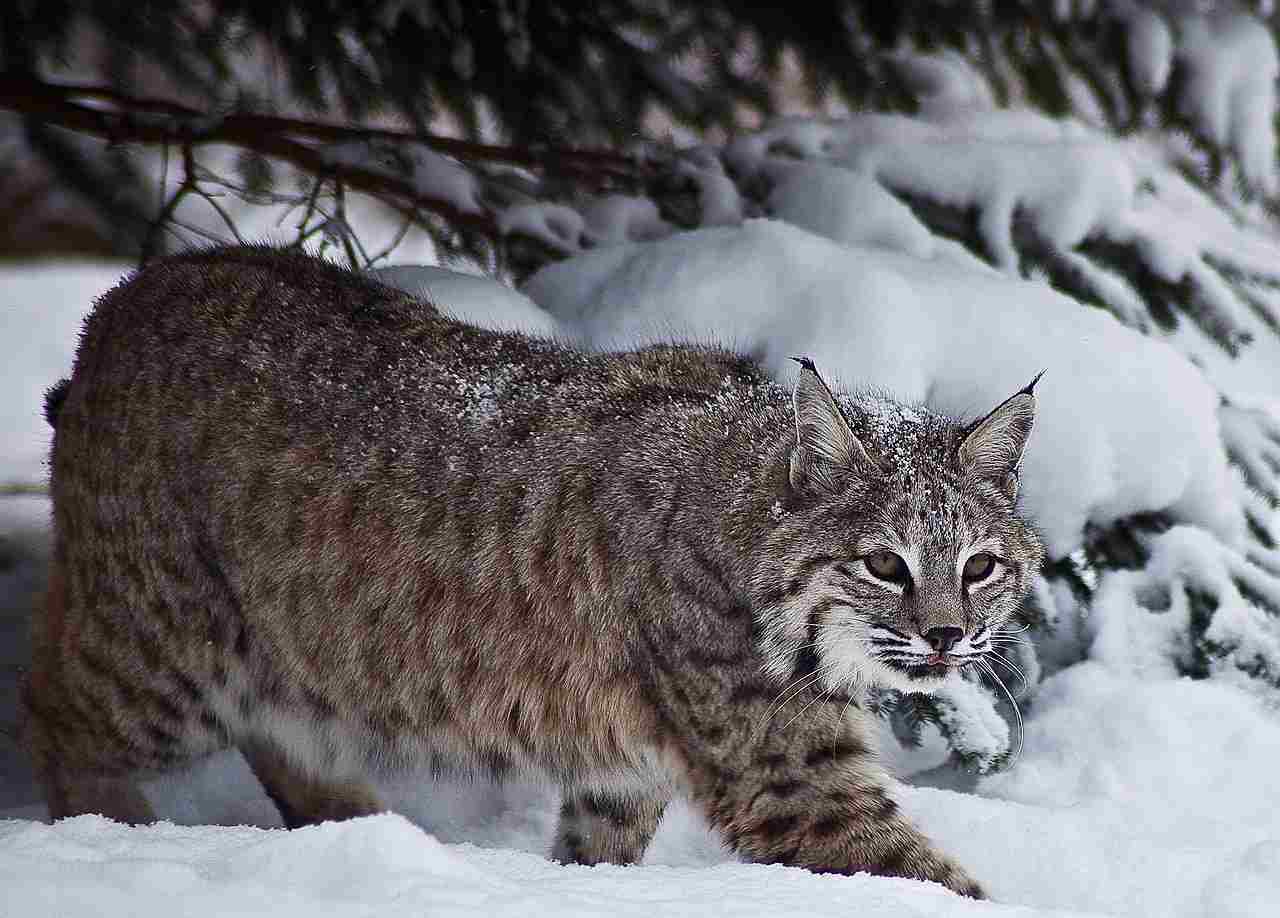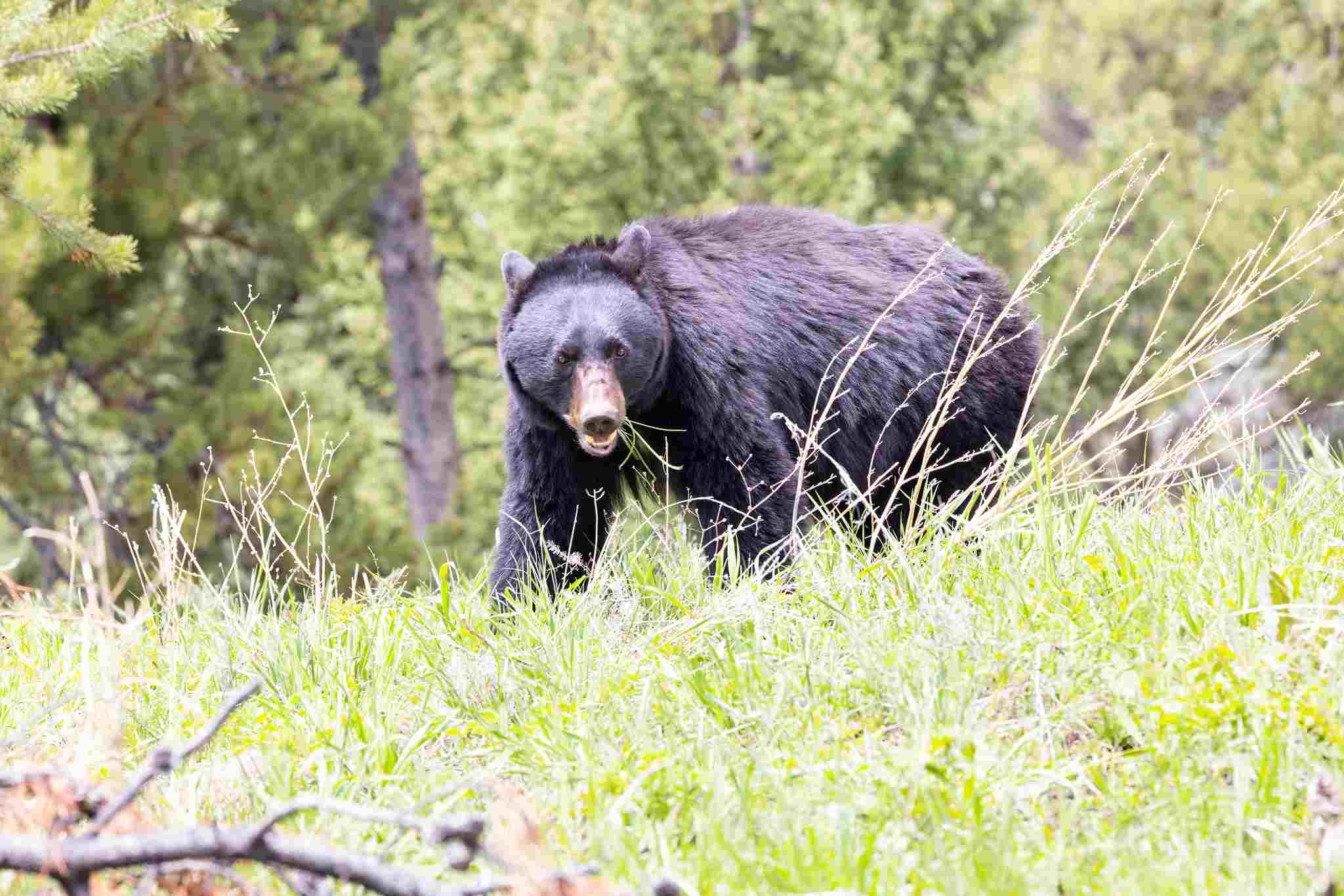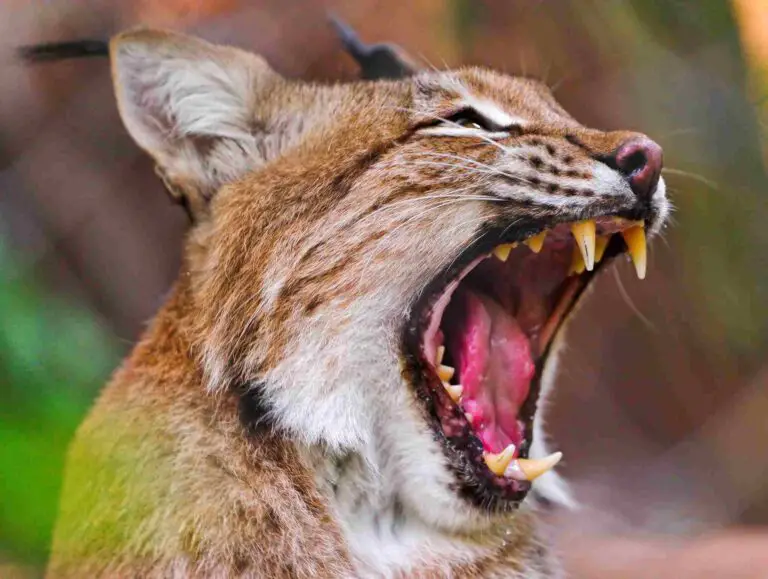Fisher Vs Wolverine Size, Weight, Overall Comparison
In assessing a potential encounter between a fisher and a wolverine, we explore the shared and distinct characteristics of these carnivorous mammals. The notable differences in size, weight, strength, and aggression position the wolverine as the likely victor in a physical confrontation. This analysis underscores the inherent advantages that contribute to the potential dominance of a wolverine over a fisher.
Fisher vs Wolverine: Assessing Differences and Predicting Outcomes
In a potential face-off between a fisher and a wolverine, the outcome is significantly influenced by their shared mustelid traits and the pronounced differences that set them apart. The wolverine’s much larger size, greater weight, heightened strength, and increased aggression make it the formidable contender in a physical confrontation.
I). Wolverine’s Much Larger Size and Greater Weight:
– Wolverines are substantially larger and heavier than fishers. This considerable size difference becomes a pivotal factor in determining the likely outcome in a direct confrontation.
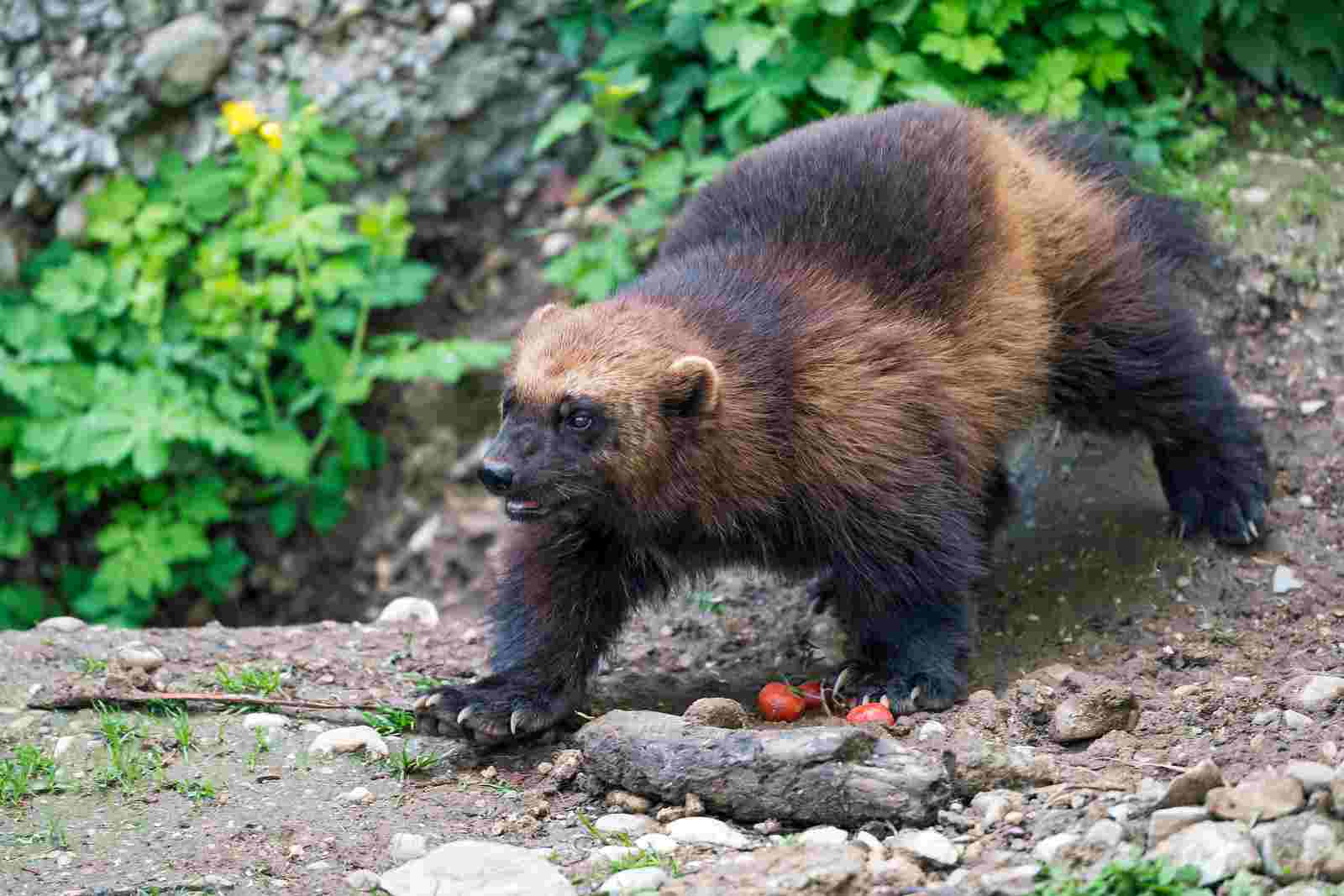
II). Fisher’s Characteristics:
– Fishers, though robust and agile, are smaller in size compared to wolverines. Their mustelid traits include a slender body, short legs, and sharp retractable claws.
III). Wolverine’s Characteristics:
– Wolverines are characterized by their powerful build, large size, and robust physique. Known for their strength and aggression, they are formidable predators in their ecosystem.
IV). Heightened Strength and Aggression:
– Wolverines possess heightened strength and aggression, giving them a distinct advantage in confrontations. This combination of physical attributes contributes significantly to their dominance over smaller predators like fishers.
V). Predicting Outcomes:
– In a physical confrontation, the wolverine’s much larger size, greater weight, heightened strength, and increased aggression position it as the likely victor over a fisher. The inherent advantages make the wolverine a formidable contender in such encounters.
VI). Real-World Observations:
– Real-world interactions between fishers and wolverines can be influenced by various factors, including territorial behavior, adaptability, and individual differences. However, the wolverine’s clear physical advantages contribute to predicting outcomes in their favor.
VII). Overall Dynamics:
– In this examination, the wolverine’s much larger size, greater weight, heightened strength, and increased aggression establish it as the likely winner in a fight against a fisher. While both share mustelid traits, the pronounced differences in physical attributes contribute to the nuanced dynamics within the mustelid family, showcasing the importance of size and strength in potential confrontations.
*Details of Comparison
| Criteria | Fisher | Wolverine |
| Appearance | Sleek, triangular head, grizzled dark brown fur. |
Stocky, robust build, almost black fur.
|
| Size | 65-120 cm length (including tail). |
65-107 cm length (excluding tail).
|
| Weight | 2-5 kg. | 9-25 kg. |
| Bite Force (PSI) | ~300 PSI. | ~1,000 PSI. |
| Physical Offensive Advantages | Agility, retractable claws. |
Powerful bite, strong jaws, sharp claws.
|
| Physical Defensive Advantages | Agile climbing, sharp claws. |
Tough fur, aggression, powerful build.
|
| Speed | Up to 24 km/h. |
Not known for exceptional speed.
|
| Agility | Nimble movements, agile climbing. |
Surprisingly agile for a stocky build.
|
| Senses | Sharp smell, hearing. |
Well-developed smell, acute hearing, keen eyesight.
|
| Overall Physical Capacity | Agile, emphasis on climbing. |
Strong, powerful, versatile.
|
| Habitat Preference(s) | Mixed coniferous and deciduous forests. |
Tundra, boreal forests, alpine regions.
|
| Tracks | Small, rounded tracks with claw marks. |
Larger tracks with prominent claw marks.
|
| Lifespan | 7-10 years. | Up to 15 years. |
| Mode of Feeding | Carnivorous, opportunistic feeders, scavengers. |
Carnivorous, opportunistic feeders, scavengers.
|
| Intelligence | Considered intelligent. |
Highly intelligent, cunning.
|
| Social Behavior | Solitary, minimal social interactions. |
Solitary, minimal social interactions.
|
| Mode of Reproduction | Polygamous mating, variations in mating seasons and gestation periods. |
Polygamous mating, variations in mating seasons and gestation periods.
|
| Parental Behavior | Maternal care, protection, and provisioning. |
Maternal care, protection, and provisioning.
|
| Proximity to Human-Inhabited Areas | Can adapt to fragmented landscapes. |
Generally avoids close proximity to settlements.
|
| Behavior Toward Humans | Generally elusive, prefer avoiding humans. |
Generally elusive, prefer avoiding humans.
|
| Danger Posed to Humans | Not considered dangerous under normal circumstances. |
Not considered dangerous under normal circumstances.
|
| Associated Precautions | Minimize attractants, secure food sources, and understand behavior. |
Minimize attractants, secure food sources, and understand behavior.
|
| Conservation Status | Face threats, including habitat loss and trapping. |
Face threats, including habitat loss and trapping.
|
Key Points
- Both fishers and wolverines exhibit adaptability to diverse habitats.
- They share polygamous mating systems and engage in maternal care.
- Wolverines are generally larger and have a longer lifespan than fishers.
- Fisher’s ecological niche often involves forests, while wolverines thrive in various environments.
1. Taxonomy
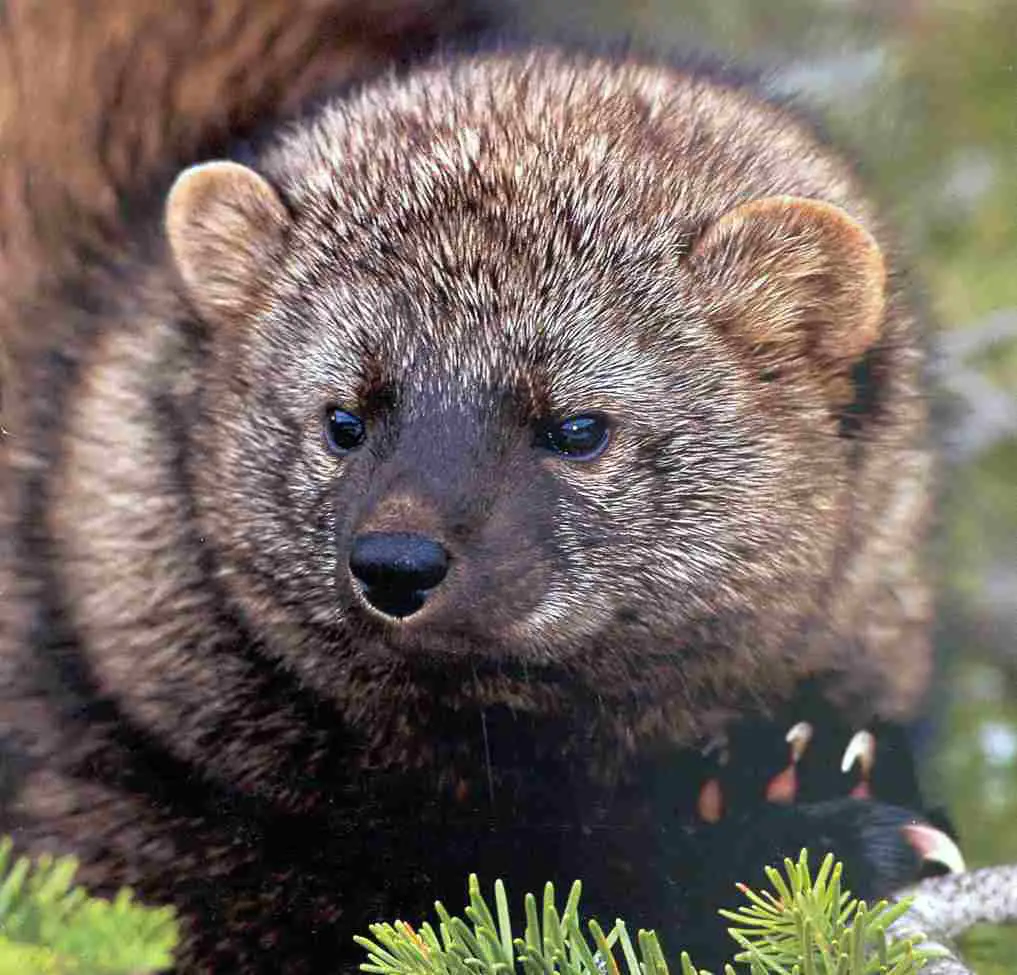
Fisher (Pekania pennanti)
Kingdom: Animalia
Phylum: Chordata
Class: Mammalia
Order: Carnivora
Family: Mustelidae
Genus: Pekania
Species: P. pennanti
Wolverine (Gulo gulo)
Kingdom: Animalia
Phylum: Chordata
Class: Mammalia
Order: Carnivora
Family: Mustelidae
Genus: Gulo
Species: G. gulo
2. Appearance
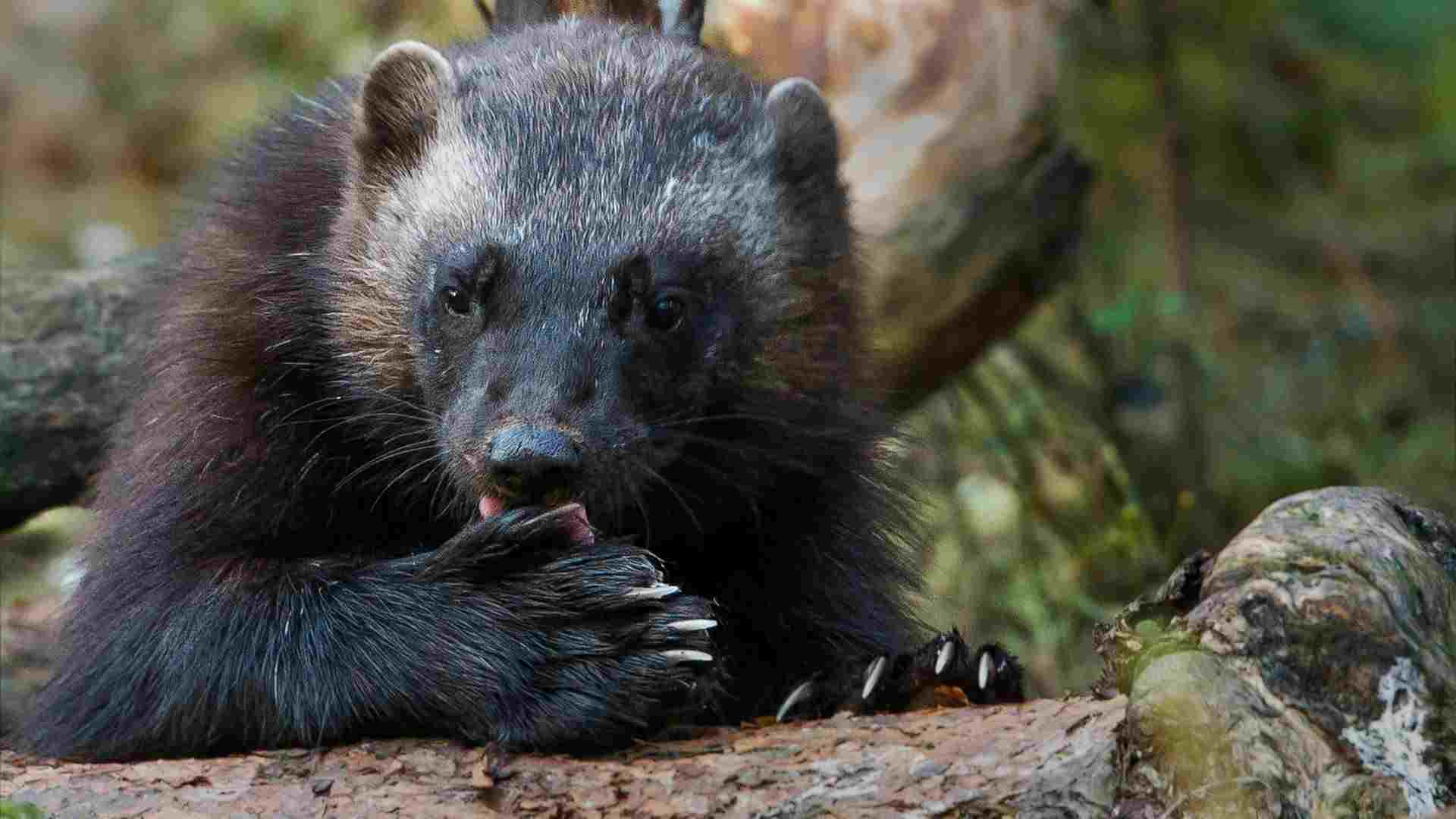
Fisher: Sleek, slender body with dark brown fur, a bushy tail, and a distinctive triangular head. Their fur often has a grizzled appearance.
Wolverine: Stocky and robust build with dark, almost black, fur. A broad head, short legs, and a long bushy tail contribute to their distinct appearance.
Comparison: Fisher appears more streamlined, while the wolverine has a more compact and powerful look.
Ecological Implications: These distinct appearances may be adaptations to their respective habitats, with the fisher’s sleek design possibly aiding in navigating dense forests, and the wolverine’s robust build suited for rugged, snowy terrain.
3. Size
Fisher: Length of 65-120 cm (25-47 in) including the tail, and a height of 30-40 cm (12-16 in).
Wolverine: Length of 65-107 cm (26-42 in) excluding the tail, and a height of 30-45 cm (12-18 in).
Comparison: Both are similar in size, with the fisher having a slightly longer overall length.
Ecological Implications: Size adaptation may reflect their ecological niches, with the fisher’s length potentially aiding in agility through dense vegetation, and the wolverine’s slightly shorter build possibly advantageous in navigating rocky landscapes.
4. Weight
Fisher: Typically 2-5 kg (4.4-11 lbs).
Wolverine: Typically 9-25 kg (20-55 lbs).
Comparison: Wolverines are significantly heavier than fishers.
Ecological Implications: Weight differences may indicate distinct hunting strategies and dietary needs, with the wolverine potentially requiring more strength for taking down larger prey in its harsh environment.
5. Bite Force (PSI)

Fisher: Estimated to have a bite force of around 300 PSI.
Wolverine: Estimated to have a powerful bite force of approximately 1,000 PSI (sufficient cross-check scientific data not yet available). While some studies estimate this value to be less than 100 PSI, such estimates contradict the wolverine’s role as a predator, and its known ability to crush bones while feeding.
Comparison: Wolverines possess a substantially stronger bite force compared to fishers.
Ecological Implications: Wolverine’s powerful bite force suggests adaptations for consuming a wide range of prey, potentially including bones and frozen carcasses in their harsh Arctic habitats.
6. Physical Offensive Advantages
Fisher: Sharp, retractable claws and agility make it adept at climbing trees to escape or ambush prey.
Wolverine: Strong jaws, powerful bite force, and sharp claws contribute to its ability to take down larger prey.
Comparison: While both have offensive capabilities, the fisher relies more on agility, and the wolverine on physical strength.
Ecological Implications: Adaptations reflect their hunting strategies – fishers may rely on ambushing and climbing, while wolverines use strength for prey capture.
7. Physical Defensive Advantages
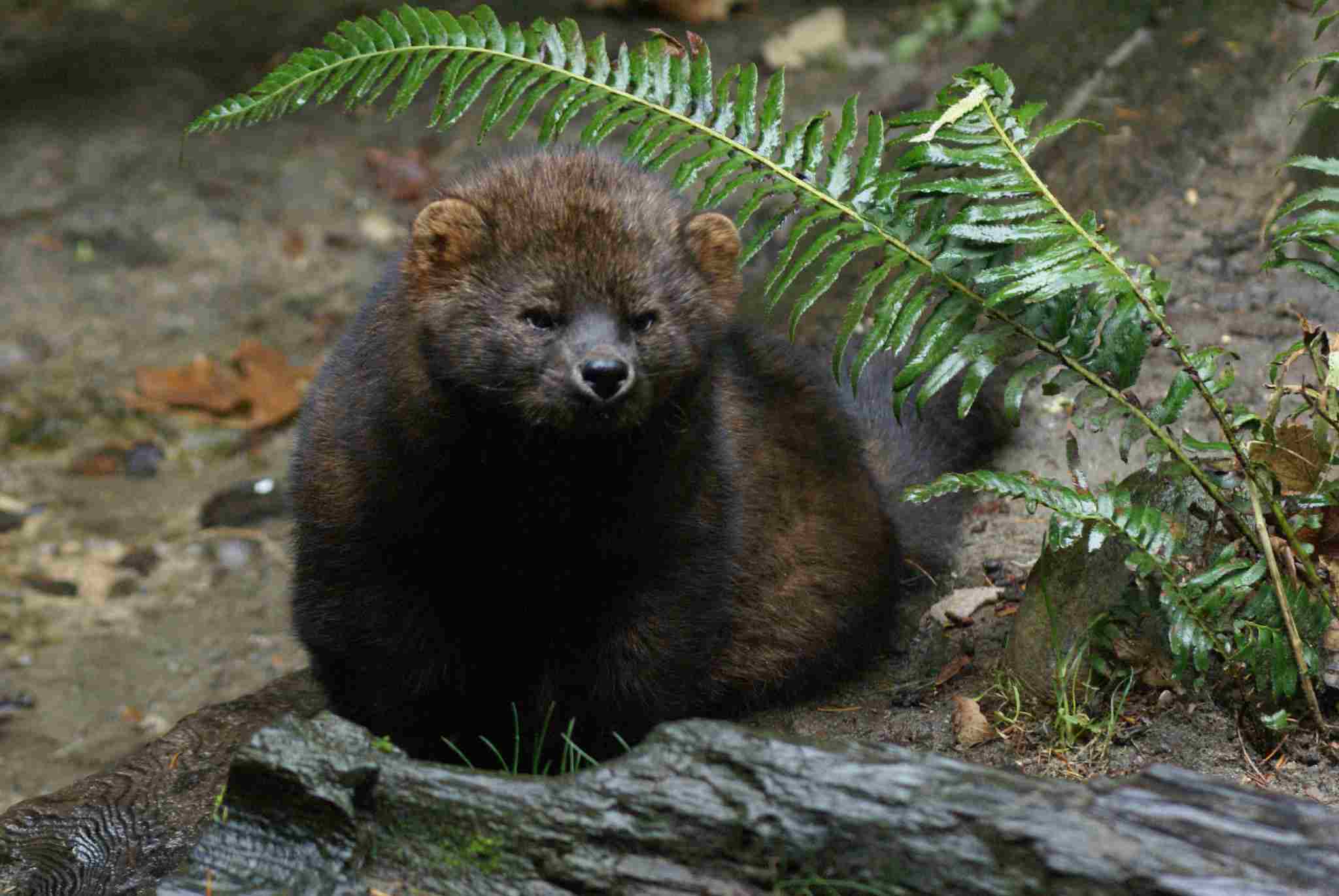
Fisher: Agile climbers, using trees as a primary escape strategy. Sharp claws and agility aid in self-defense.
Wolverine: Tough, thick fur provides insulation and protection against harsh weather conditions. Powerful build and aggressive behavior can deter potential threats.
Comparison: Fisher primarily relies on agility and evasion, while wolverine employs physical toughness and aggression.
Ecological Implications: Reflective of their habitats – fishers need to escape predators in dense forests, while wolverines need resilience in harsh, cold environments.
8. Speed (Km/hour or Mile/hour)
Fisher: Agile and swift, capable of reaching speeds up to 24 km/h (15 mph).
Wolverine: Not known for exceptional speed but can cover large territories.
Comparison: Fisher is relatively faster, emphasizing agility in its hunting strategy, while wolverines rely on endurance.
Ecological Implications: Speed adaptations align with their ecological needs – fishers navigating through dense vegetation, and wolverines covering vast, often snowy territories.
9. Agility

Fisher: Highly agile, known for quick and nimble movements, particularly in trees.
Wolverine: Despite a stockier build, wolverines exhibit surprising agility, useful in navigating challenging terrains.
Comparison: Both species showcase impressive agility, adapted to their respective environments.
Ecological Implications: Agility aids in navigating diverse landscapes, from dense forests for fishers to rugged terrains for wolverines, enhancing their hunting and survival capabilities.
10. Senses
Fisher: Sharp sense of smell and hearing, essential for locating prey in forested environments.
Wolverine: Well-developed sense of smell, acute hearing, and keen eyesight contribute to effective hunting.
Comparison: Both possess heightened senses, crucial for their survival, with some variation in emphasis.
Ecological Implications: Adaptations align with their habitats – fishers relying on scent in dense forests, while wolverines utilize a combination of senses for hunting in diverse environments.
11. Overall Physical Capacity
Fisher: Agile, with sharp claws for climbing and ambushing prey, exhibiting physical prowess in navigating dense forests.
Wolverine: Strong, robust build with powerful jaws and claws, emphasizing strength for capturing and consuming a variety of prey.
Comparison: Fisher excels in agility, while wolverine emphasizes strength, showcasing diverse physical capacities.
Ecological Implications: Physical adaptations align with their ecological roles – fishers as agile predators in forests, and wolverines as powerful scavengers in harsh environments.
12. Habitat Preference(s)
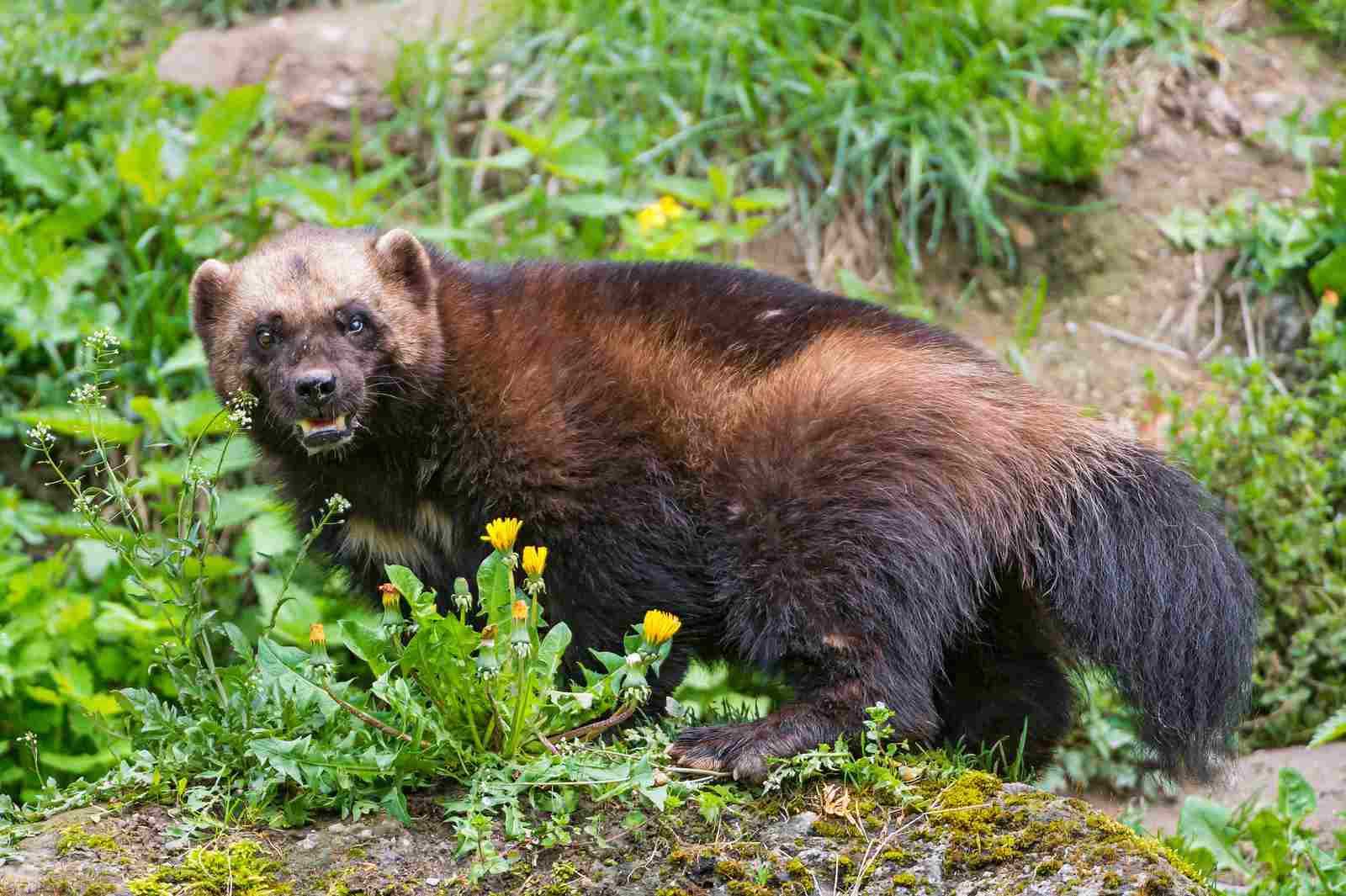
Fisher: Prefers mixed coniferous and deciduous forests with access to water bodies for hunting.
Wolverine: Inhabits a range of environments including tundra, boreal forests, and alpine regions.
Comparison: While both are adaptable, fishers favor forested habitats, and wolverines thrive in diverse landscapes.
Ecological Implications: Habitat preferences reflect their ecological niches – fishers navigating trees for prey, and wolverines covering large territories for scavenging.
13. Tracks
Fisher: Small, rounded tracks with five toe pads and sharp claw marks, resembling those of a small carnivore.
Wolverine: Distinctive, larger tracks with five toe pads and prominent claw marks, indicating a powerful predator.
Comparison: Wolverine tracks are larger and more robust than those of fishers.
Ecological Implications: Track differences may aid in identifying species and understanding their movements, crucial for ecological monitoring and conservation efforts.
14. Lifespan
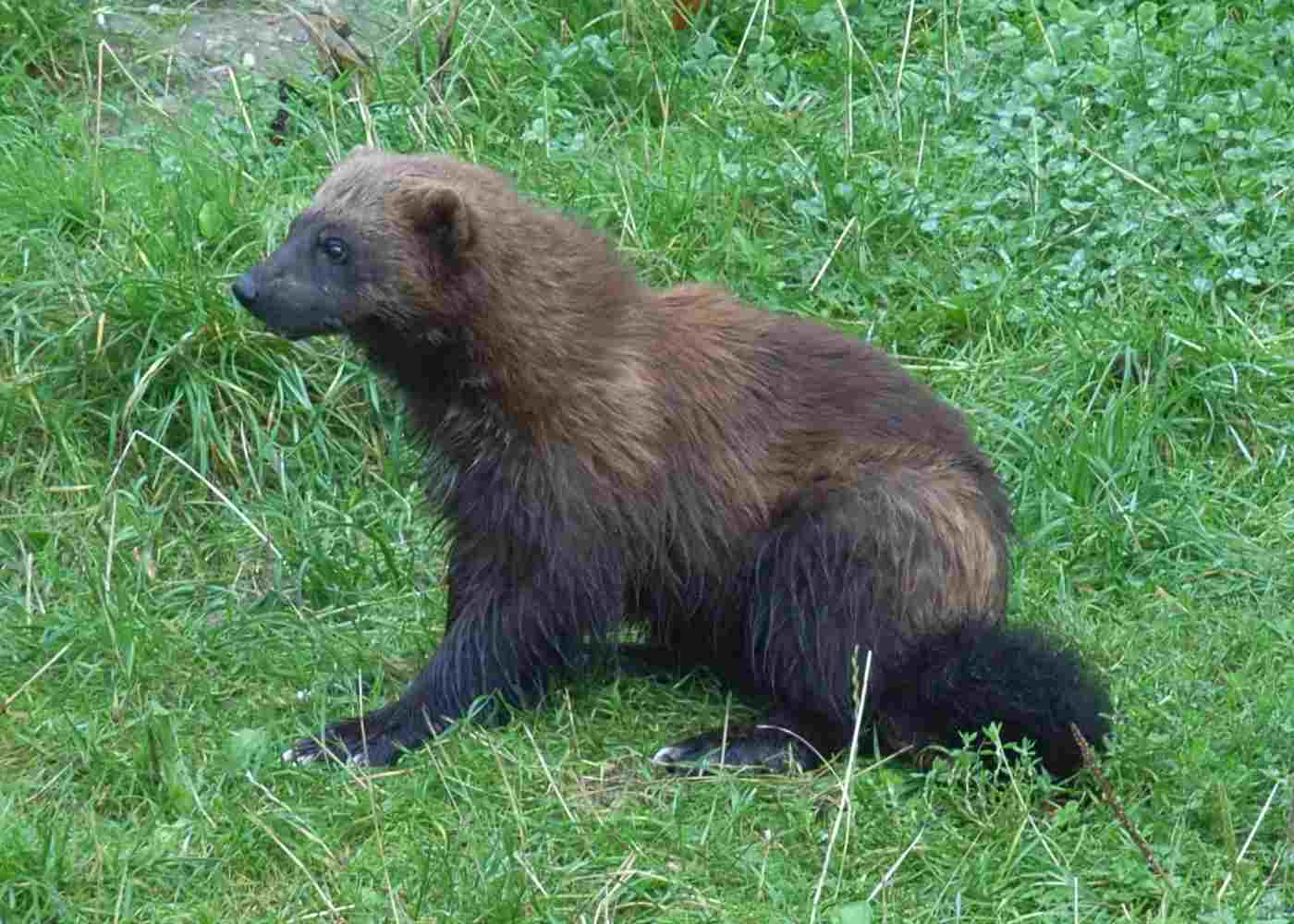
Fisher: Typically lives 7-10 years in the wild.
Wolverine: Can live up to 15 years in the wild.
Comparison: Wolverines generally have a longer lifespan than fishers.
Ecological Implications: Longer lifespan may contribute to wolverines’ ability to adapt to the challenges of their diverse and often harsh environments.
15. Mode of Feeding
Fisher: Carnivorous, preying on small mammals, birds, and occasionally fish. Also scavenges on carrion.
Wolverine: Opportunistic feeders, consuming a variety of prey including small mammals, birds, and scavenging on carrion.
Comparison: Both are carnivores with a broad diet, showcasing adaptability.
Ecological Implications: Dietary flexibility allows them to exploit available food resources, contributing to their ecological roles.
16. Intelligence

Fisher: Considered intelligent, displaying problem-solving skills in hunting and navigating their environment.
Wolverine: Highly intelligent, known for cunning behavior and adaptability.
Comparison: Wolverines are often regarded as more intelligent, adapting to diverse environments and displaying strategic behaviors.
Ecological Implications: Intelligence contributes to their ability to survive and thrive in varied habitats, with wolverines showing a higher level of adaptability.
17. Social Behavior
Fisher: Generally solitary, with limited social interactions outside of mating season.
Wolverine: Solitary, territorial animals, with minimal social interactions except during the breeding season.
Comparison: Both are primarily solitary, reflecting their independent nature.
Ecological Implications: Solitary behavior is adaptive, allowing them to efficiently exploit resources and reduce competition in their respective habitats.
18. Mode of Reproduction
Fisher: Polygamous mating system, with breeding occurring in late winter or early spring. Females give birth to a litter of 1-4 kits after a gestation period of around 50 days.
Wolverine: Also polygamous, with mating occurring in summer. Females give birth to 1-5 kits after a gestation period of approximately 30-50 days.
Comparison: Both species exhibit polygamous mating systems, with slight variations in mating seasons and gestation periods.
Ecological Implications: Adaptations in reproduction align with seasonal conditions in their respective habitats, ensuring the survival of offspring.
19. Parental Behavior
Fisher: Female fishers provide maternal care, nursing and protecting their kits until they are independent.
Wolverine: Female wolverines are also involved in parental care, providing protection and food for their kits.
Comparison: Both species exhibit maternal care, essential for the survival and development of their offspring.
Ecological Implications: Parental behavior ensures the survival of the next generation, contributing to the stability of their populations in their ecological niches.
20. Proximity to Human-Inhabited Areas

Fisher: Can be found in forests near human-inhabited areas, adapting to fragmented landscapes.
Wolverine: Generally avoids close proximity to human settlements but may occasionally venture into more remote areas.
Comparison: Both species can adapt to human-influenced landscapes, but wolverines tend to be more elusive.
Ecological Implications: Adaptability to human-altered environments may influence their long-term survival and interactions with human activities.
21. Behavior Toward Humans
Fisher: Generally elusive and tends to avoid human interaction but may become more tolerant in areas with less human disturbance.
Wolverine: Typically avoids humans but can display aggressive behavior if cornered or threatened.
Comparison: Both species usually prefer to avoid direct encounters with humans.
Ecological Implications: Behavioral patterns towards humans reflect their ability to adapt to human presence and potential conflicts, impacting conservation and management strategies.
22. Danger Posed to Humans
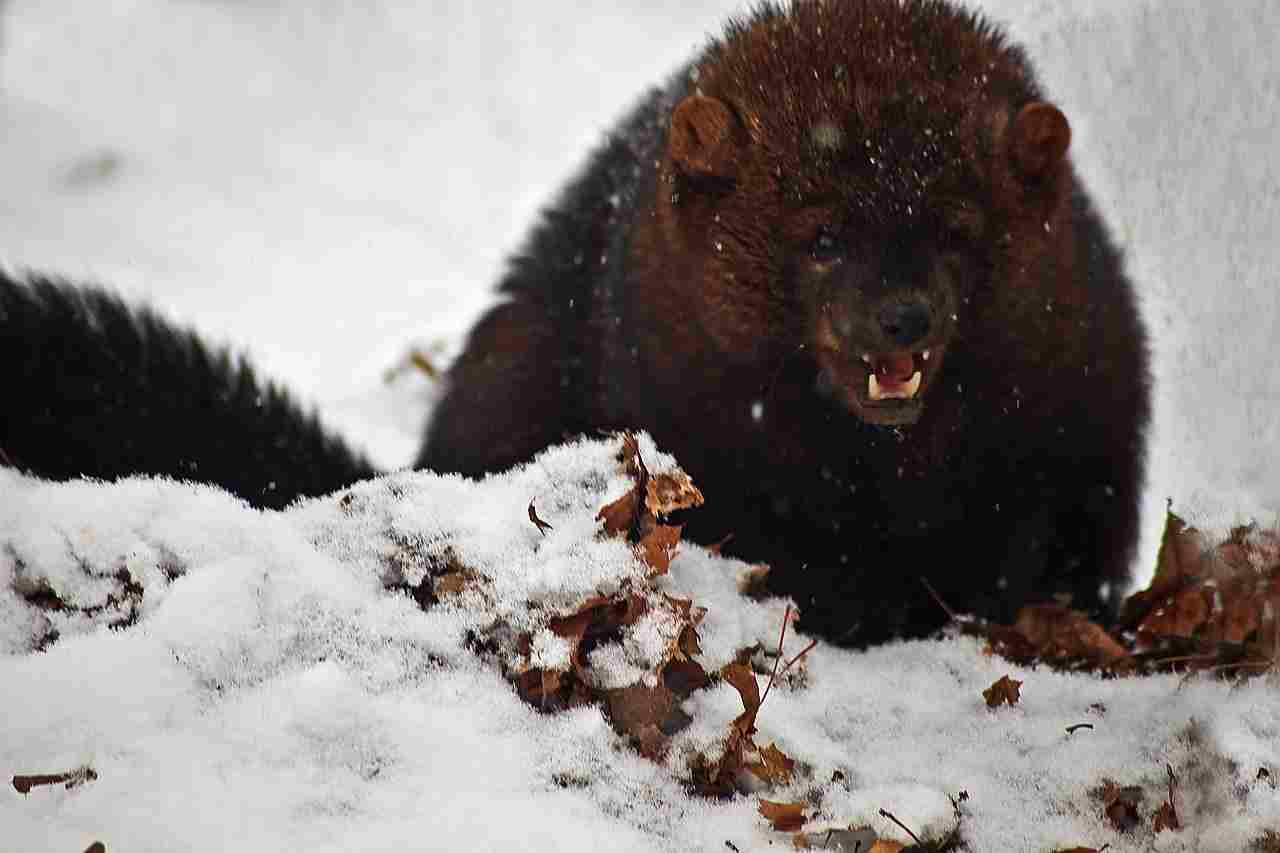
Fisher: Generally not considered dangerous to humans; they are shy and tend to avoid direct confrontations.
Wolverine: While wolverines are not inherently aggressive towards humans, they can be dangerous if cornered, displaying defensive behavior.
Comparison: Both species are not known for posing significant danger to humans under normal circumstances.
Ecological Implications: Limited danger to humans may contribute to coexistence in shared habitats, but awareness of defensive behaviors is crucial.
23. Associated Precautions
Fisher: Precautions involve minimizing attractants around homes, securing food sources, and understanding their behavior to prevent conflicts.
Wolverine: Similar precautions, including securing attractants and avoiding direct confrontation, are recommended.
Comparison: Precautions for both species involve minimizing human-wildlife conflicts through responsible practices.
Ecological Implications: Human awareness and responsible behavior are crucial for minimizing negative interactions and supporting the conservation of these species.
24. Conservation Status
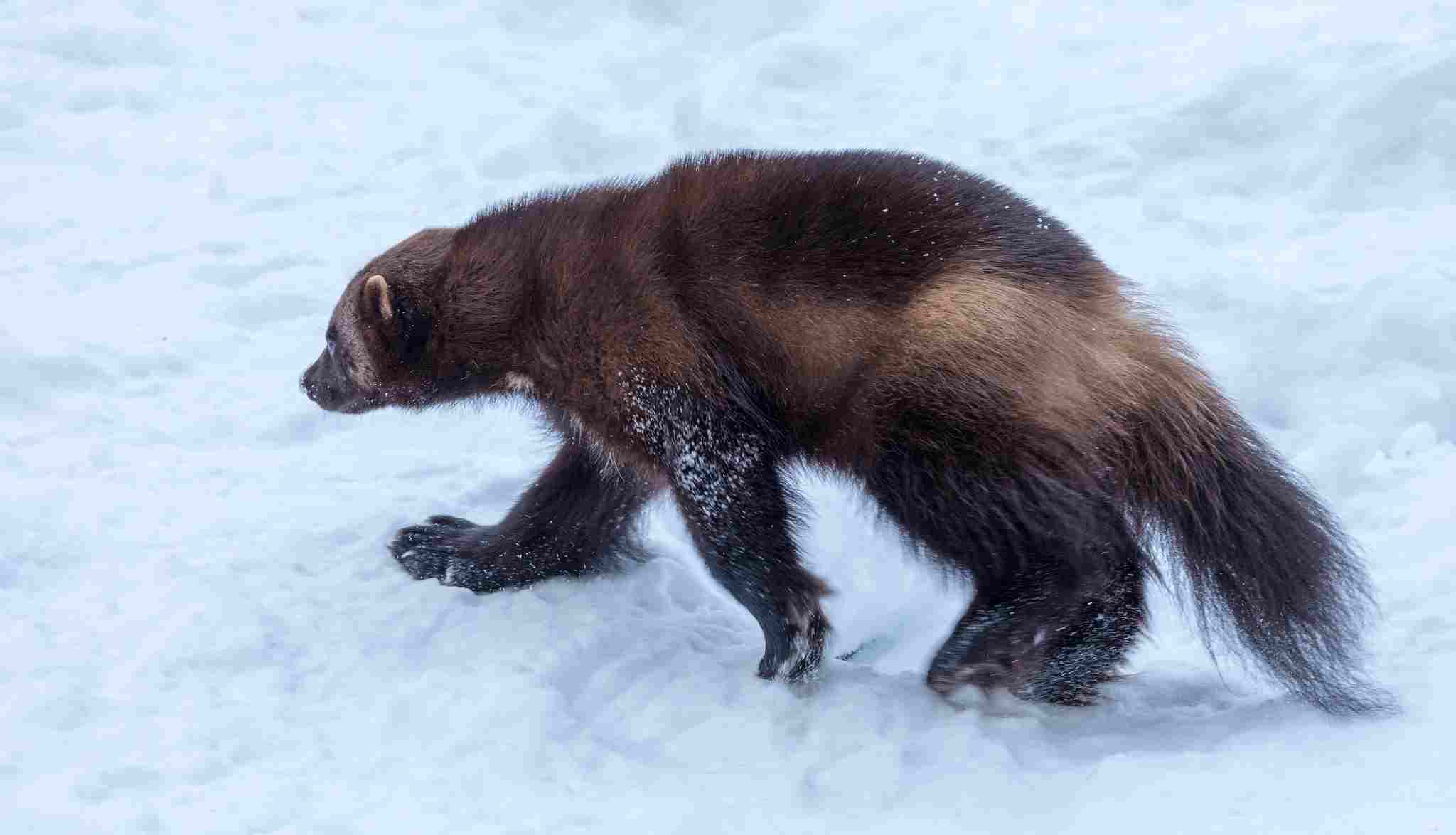
Fisher: Conservation status varies regionally; some populations are stable, while others face threats due to habitat loss and trapping.
Wolverine: Conservation status varies, with concerns in certain regions due to habitat loss, climate change, and trapping.
Comparison: Both species face conservation challenges, including habitat-related threats and human-wildlife conflicts.
Ecological Implications: Conservation efforts are necessary to address these challenges and maintain healthy populations, contributing to ecosystem balance.
Summary of Comparison
Appearance:
Fisher: Sleek, triangular head, grizzled dark brown fur.
Wolverine: Stocky, robust build, almost black fur.
Size:
Fisher: 65-120 cm length (including tail).
Wolverine: 65-107 cm length (excluding tail).
Weight:
Fisher: 2-5 kg.
Wolverine: 9-25 kg.
Bite Force (PSI):
Fisher: ~300 PSI.
Wolverine: ~1,000 PSI.
Physical Offensive Advantages:
Fisher: Agility, retractable claws.
Wolverine: Powerful bite, strong jaws, sharp claws.
Physical Defensive Advantages:
Fisher: Agile climbing, sharp claws.
Wolverine: Tough fur, aggression, powerful build.
Speed:
Fisher: Up to 24 km/h.
Wolverine: Not known for exceptional speed.
Agility:
Fisher: Nimble movements, agile climbing.
Wolverine: Surprisingly agile for a stocky build.
Senses:
Fisher: Sharp smell, hearing.
Wolverine: Well-developed smell, acute hearing, keen eyesight.
Overall Physical Capacity:
Fisher: Agile, emphasis on climbing.
Wolverine: Strong, powerful, versatile.
Habitat Preference(s):
Fisher: Mixed coniferous and deciduous forests.
Wolverine: Tundra, boreal forests, alpine regions.
Tracks:
Fisher: Small, rounded tracks with claw marks.
Wolverine: Larger tracks with prominent claw marks.
Lifespan:
Fisher: 7-10 years.
Wolverine: Up to 15 years.
Mode of Feeding:
Both: Carnivorous, opportunistic feeders, scavengers.
Intelligence:
Fisher: Considered intelligent.
Wolverine: Highly intelligent, cunning.
Social Behavior:
Both: Solitary, minimal social interactions.
Mode of Reproduction:
Both: Polygamous mating, variations in mating seasons and gestation periods.
Parental Behavior:
Both: Maternal care, protection, and provisioning.
Proximity to Human-Inhabited Areas:
Fisher: Can adapt to fragmented landscapes.
Wolverine: Generally avoids close proximity to settlements.
Behavior Toward Humans:
Both: Generally elusive, prefer avoiding humans.
Danger Posed to Humans:
Both: Not considered dangerous under normal circumstances.
Associated Precautions:
Both: Minimize attractants, secure food sources, and understand behavior.
Conservation Status:
Both: Face threats, including habitat loss and trapping.
Conclusion
I). Similarities
Both fishers and wolverines exhibit adaptability to diverse habitats.
They share polygamous mating systems and engage in maternal care.
II). Differences
Wolverines are generally larger and have a longer lifespan than fishers.
Fisher’s ecological niche often involves forests, while wolverines thrive in various environments, including alpine regions.


